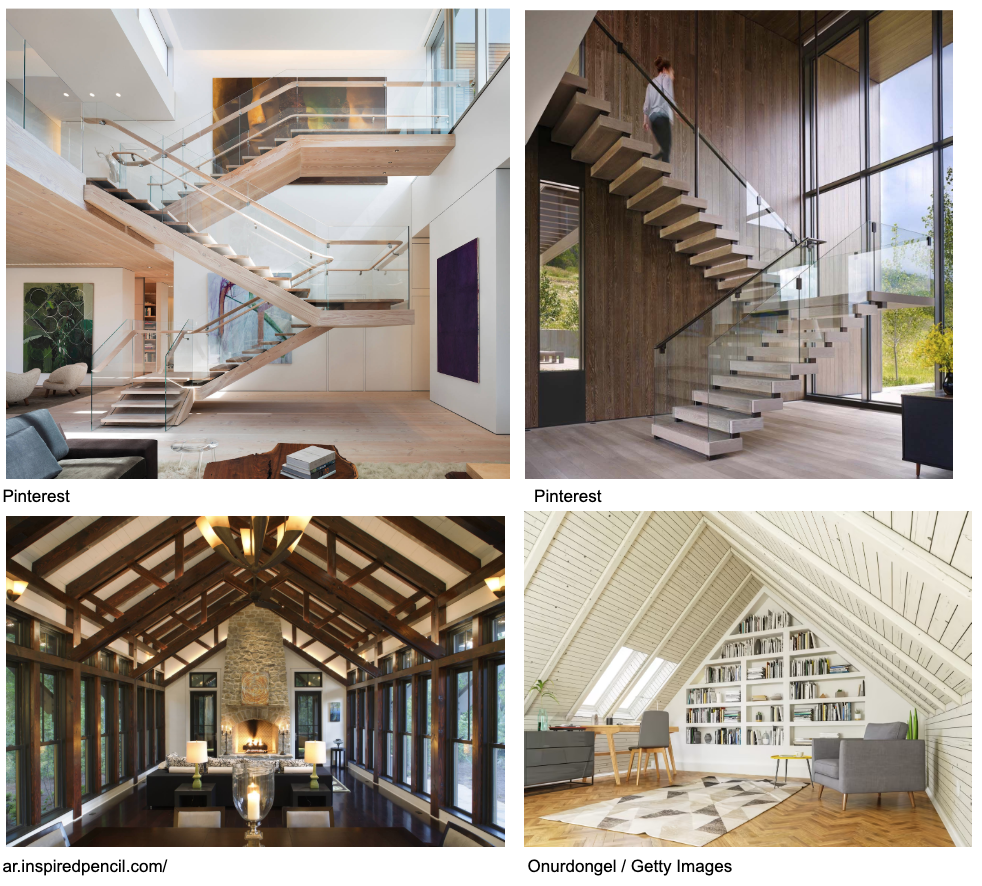The Design Brief® | Volume XIII | How to Use LINE Effectively in Interiors
©️ Dakota Design Company 2017-2025 | All rights reserved. This content may not be reproduced, distributed, or used without permission.
WRITTEN BY DR. GLORIA for DAKOTA DESIGN COMPANY
In my years of teaching college-level interior design students, I have used the analogy that the elements of design are like the ingredients in a recipe: flour, sugar, salt. The elements are the building blocks used selectively by designers to create the desired effects in spaces.
The principles of design equate to how those ingredients or building blocks are artfully combined to arrive at a flavorful and pleasing outcome. The principles are the strategies.
The listing of design elements and principles varies by author or theorist, but I have always referred to these as the overriding quintessential elements and principles of interior design.
ELEMENTS:
Line
Shape
Pattern
Texture
Color
Light
PRINCIPLES:
Rhythm
Balance
Scale and Proportion
Emphasis and Focal Point
Unity
We have covered the design elements COLOR and LIGHT in several previous Design Briefs:
Using color to alter spatial perceptions
Now, let’s examine how various types of LINE, or linear elements, can be artfully used in interior spaces to achieve desired effects.
There are four varieties of LINE—or linear elements—used in interiors:
Horizontal
Vertical
Diagonal (all of which are straight)
Curvilinear
Let’s look at all four and how they can be effectively used to arrive at design objectives. The degree to which a strong statement of LINE is expressed within an interior (such as with the examples below) is entirely up to the designer. Generally, strong use of straight line suggests a contemporary interior, and use of curved line suggests a more traditional interior, although not always.
Strong statements of line are made in the images below.
HORIZONTAL LINE
Horizontal lines are parallel to the horizon line. Lines in this direction suggest calmness, rest, and repose—qualities that represent our perception of the earth’s horizon. It is perhaps also the fact that we lie horizontally while resting and sleeping that horizontal lines suggest to us a sense of serenity.
So, in design, horizontal line can be used to elicit calmness and tranquility, passiveness and restfulness. We often see this in the design of spa-like bathrooms, where the objective is to create a relaxing experience. Note the multiple examples of horizontal line below. The repetition of multiple horizontal lines in interior spaces calm us.
Famed architect Frank Lloyd Wright is well known to have used strong horizontal lines in his architecture. Wright believed that a building should be well unified with the landscape in which it exists, so he emulated the lines of the surrounding landscape and the horizon in his building designs. Note how these two famous buildings elicit a sense of calm and unity.
The interiors of Japanese homes often elicit a sense of calmness, simplicity, and inner peace, due to their simple lines and linearity. Note the simple horizontal lines in the Japanese interior below. This aligns with the concept and core principles of Zen, the pursuit of mindfulness, harmony, and being fully present in the moment.
VERTICAL LINE
Vertical lines are perpendicular to the horizon. They denote resistance to the forces of gravity and therefore have more visual strength than horizontal lines. Verticality communicates strength, elegance, sophistication, and dignity, so it is appropriately used in formal and imposing interiors. Vertical lines also draw the eye upward, creating the illusion of increased height, taller ceilings, and grandeur. Note the vertical lines in the architecture, detailing, and furnishings below.
Strong vertical line can be achieved in an interior through the use of tall windows, tall columns, striped wallcoverings, floor-to-ceiling draperies, paneling, hanging light fixtures, and vertical slat wall.
DIAGONAL LINE
Diagonal and zig-zagged lines elicit a sense of movement, energy, and strength. Because they are not typically found in nature, and must be engineered, they are very dynamic and powerful, reminding us of the outer limits of human ingenuity. Diagonal lines are perhaps the sturdiest of line types and suggest great resilience.
Consider the rendering below, and the strong statement of strength, determination, and resilience it suggests.
This rendering was produced by well-known architect Daniel Libeskind in the aftermath of the 9/11 World Trade Center attacks. It was a portion of his entry in an architectural competition for the redevelopment and rebuilding of the site. Although this precise design was never built, the diagonal lines in this rendering make a strong statement about the sense of defiance and resilience Americans felt after the 9/11 attacks and exemplify the potency of diagonal lines.
By their very nature, exposed stairways and vaulted ceilings give a strong sense of diagonal line.
These are very visually interesting elements. Spaces highlighting diagonal line denote pronounced dynamic motion and a sense of movement and energy. The use of diagonal line ensures that these spaces never look static or uninteresting. Adding an element with diagonal line is an effective strategy to add visual interest to an otherwise lackluster space.
CURVILINEAR LINES
Curved lines are soft, feminine, and sensuous, like the soft and gentle outlines of the female body. Adding sinuous, curvilinear, or flowing lines into a space will evoke fluidity, softness, gracefulness, and richness of detail. Curved lines in interior spaces are very approachable and inviting.
Curved lines, and circular forms can also suggest a bit of whimsy and playfulness.
Using curvilinear furniture—as opposed to pieces with straight lines and rectilinear shapes—is a conscious choice to soften the look of a space, to make it inviting and approachable, and to create a sense of comfort and harmony.
The period of design in 18th century France, called Rococo, during the period of King Louis XV (1715-1774) is said to have no straight lines within its ornamentation. Using motifs of shells, garlands, and florals, the focus was on fluid, curvaceous, and elegant motifs, as seen in the hotel lobby image, below left. These interiors were extremely ornate and elegant. The bedroom below right shows a modern-day interpretation of the curvaceous lines of French Rococo furniture design.
Of course, designers have great latitude to mix and combine various linear elements to achieve the desired effect. Often, a designer’s goal can be achieved by blending and emphasizing various line types, There are no hard-and-fast rules. But these common rules-of-thumb generally apply:
Most interiors include a blending of straight, horizontal, vertical, diagonal, and curved lines
Straight line elements tend to look more contemporary, and curved lines, more traditional
Horizontal lines suggest serenity and restfulness
Horizontal lines create a connection with nature
Vertical lines add strength and stability
Vertical straight lines contribute to a feeling of height and grandeur
Diagonal line suggests resilience and energy
Diagonal lines add visual interest
Curved lines add softness and fluidity, or whimsy and spiritedness
Curvilinear lines and rounded shapes introduce a sense of flow and movement
By adding strong statements of LINE within a space, designers can effectively accentuate their desired effect.
Sources used:
Slotis, S. J. (2017). Foundations of interior design, 3rd ed. Fairchild Books
Want to explore more issues? Here are a few favorite past editions:
Want The Design Brief® delivered straight to your inbox?
If you liked this email, be sure to sign up for The Design Brief®, our complimentary publication that gives you bite-sized lessons on all the technical interior design topics you didn’t learn (or forgot) from design school—straight from our resident interior design professor!
Looking for more? Keep reading:


























